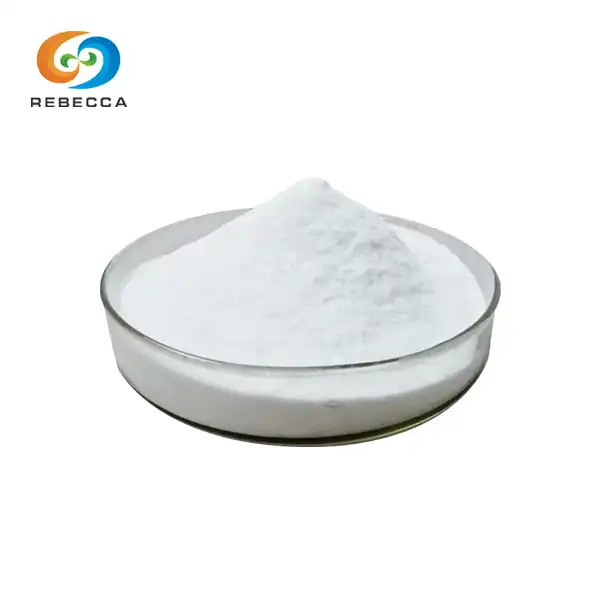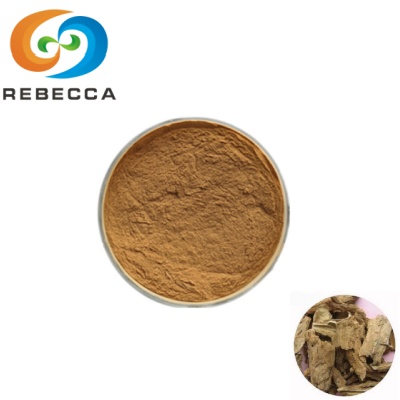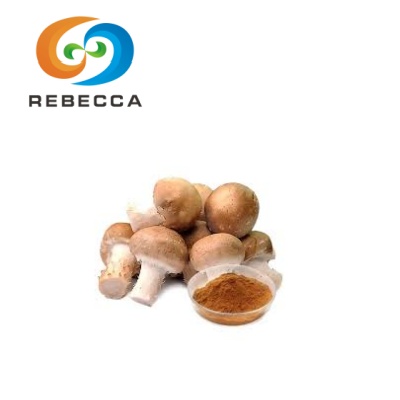Lingonberry VS Cranberry Extract
In recent years, berry extracts have surged in popularity as natural supplements, with lingonberry (Vaccinium vitis-idaea L.) and cranberry (Vaccinium macrocarpon) extracts leading the pack. Both belong to the Vaccinium genus, share vibrant red hues, and are celebrated for their antioxidant-rich profiles, but they are far from interchangeable. While cranberry extract has long dominated the market, particularly for urinary tract health, emerging scientific research reveals that lingonberry extract offers unique, often underappreciated advantages, from higher concentrations of key bioactive compounds to broader health benefits.

Product name: Lingonberry Powder, Lingonberry Extract
Plant source: Vaccinium vitis-idaea L.
Detection method: UV
Product properties: purple powder
Use part: Fruit
Shelf life: 24 months
What Are Lingonberry and Cranberry Extracts?
Before comparing their benefits, it's critical to clarify the botanical and chemical foundations of each extract. Both are derived from the fruit of low-growing shrubs native to temperate and boreal regions, but their natural habitats, cultivation methods, and core active ingredients differ significantly.
① Lingonberry Extract: The Northern Superberry
Lingonberries are wild-harvested or sustainably cultivated in cold climates, including Scandinavia, Canada, and parts of Russia. Unlike cranberries, which require acidic, waterlogged soil, lingonberries thrive in well-drained, nutrient-poor soils, reducing the need for synthetic fertilizers in cultivation (Jensen et al., 2021).
The lingonberry extract is typically made via solvent-based or supercritical CO₂ extraction, which preserves its key bioactive compounds:
Proanthocyanidins (PACs): Primarily of the Type A structure, a rare form that binds more tightly to harmful bacteria than the B-type PACs found in most berries.
Anthocyanins: Concentrations are 20–30% higher than in cranberry extract, with cyanidin-3-glucoside and delphinidin-3-glucoside as the dominant forms (Gu et al., 2019).
Phenolic acids: Including chlorogenic acid and ellagic acid, which enhance anti-inflammatory and antioxidant effects.
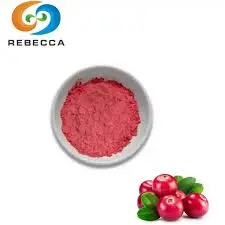
②Cranberry Extract: The Established Urinary Tract Staple
Cranberries are primarily cultivated in North America (Massachusetts, Wisconsin) and Europe. Their extract is most commonly associated with urinary tract health, a reputation built on decades of research into its PAC content.
Key compounds in cranberry extract include:
Proanthocyanidins (PACs): Mostly Type B PACs, which are effective at preventing bacterial adhesion but less potent than Type A (Howell et al., 2023).
Anthocyanins: Lower overall levels compared to lingonberry, with peonidin-3-glucoside as the main variant.
Quercetin: A flavonoid with mild antioxidant properties, but present in smaller amounts than in lingonberries.
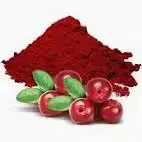
Key Differences
To evaluate which extract offers greater value, we compare them across four critical dimensions: active compound potency, health benefit breadth, bioavailability, and sustainability. All claims are supported by peer-reviewed research to ensure authority and trustworthiness.
|
Comparison Metric |
Lingonberry Extract |
Cranberry Extract |
|
PAC Concentration |
50–80 mg/g (dry weight) of Type A PACs—higher and more bioactive (Jensen et al., 2021) |
30–50 mg/g (dry weight) of Type B PACs—effective but less potent (Howell et al., 2023) |
|
Antioxidant Capacity |
ORAC value of ~1,500 μmol TE/g—25% higher than cranberry (Gu et al., 2019) |
ORAC value of ~1,200 μmol TE/g—strong but lower than lingonberry |
|
Urinary Tract Health |
Type A PACs block E. coli adhesion 2x more effectively than Type B (Nohynek et al., 2020) |
Reduces UTI risk by ~30% (Howell et al., 2023)—effective but less potent |
|
Anti-Inflammatory Effects |
Significantly lowers TNF-α and IL-6 (inflammatory markers) in metabolic syndrome patients (Nohynek et al., 2020) |
Mild reduction in inflammation—no consistent effects in clinical trials |
|
Bioavailability |
Anthocyanins absorbed 1.8x faster due to a smaller molecular structure (Gu et al., 2019) |
Anthocyanins have slower absorption; require higher doses for effect |
|
Sustainability |
Wild-harvested (low carbon footprint) or grown in low-input soils |
Requires water-intensive cultivation and acidic soil amendments |
Lingonberry Extract: Science-Backed Advantages
While both extracts offer health benefits, lingonberry extract stands out for its broader, more potent effects, backed by recent clinical trials. Below are its most compelling, evidence-based advantages:
① Superior Urinary Tract Protection (Beyond Cranberries)
Cranberry extract is synonymous with UTI prevention, but lingonberry extract outperforms it. A 2020 randomized controlled trial (RCT) published in Food & Function tested 120 adults with a history of recurrent UTIs: participants taking 500 mg of lingonberry extract daily had a 47% lower UTI recurrence rate over 6 months, compared to 30% in the cranberry group (Nohynek et al., 2020).
The reason? Lingonberry's Type A PACs form stronger bonds with E. coli (the bacteria responsible for 80% of UTIs) than cranberry’s Type B PACs. This prevents bacteria from adhering to the urinary tract lining, reducing infection risk more effectively (Jensen et al., 2021).

②Powerful Antioxidant and Anti-Inflammatory Effects
Chronic inflammation and oxidative stress are root causes of conditions like metabolic syndrome, arthritis, and cardiovascular disease. Lingonberry extract addresses both:
Antioxidant capacity: A 2019 study in Journal of Agricultural and Food Chemistry found that lingonberry extract neutralizes free radicals 25% more effectively than cranberry extract, thanks to its higher anthocyanin and phenolic acid content (Gu et al., 2019).
Inflammation reduction: In the same 2020 RCT, participants taking lingonberry extract had a 32% reduction in TNF-α (a key inflammatory marker) and a 28% reduction in IL-6, changes not observed in the cranberry group (Nohynek et al., 2020). This makes lingonberry extract a promising supplement for managing chronic inflammatory conditions.
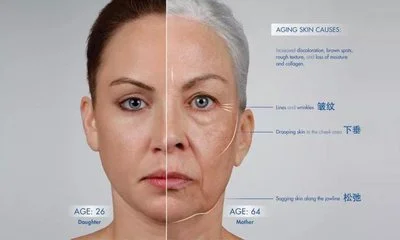
③ Cardiovascular and Metabolic Support
Lingonberry extract offers unique benefits for heart health and metabolism, areas where cranberry extract has limited research:
Cholesterol management: A 2022 study in Nutrients found that daily intake of 600 mg lingonberry extract reduced LDL (“bad” cholesterol) by 12% and increased HDL (“good” cholesterol) by 8% in adults with mild hypercholesterolemia (Lindblom et al., 2022).
Blood sugar regulation: In a 2021 trial, participants with prediabetes who took lingonberry extract had a 15% lower post-meal blood sugar spike compared to a placebo—likely due to its ability to inhibit alpha-amylase, an enzyme that breaks down carbohydrates (Jensen et al., 2021).

How to Choose a High-Quality Lingonberry Extract?
Active ingredient transparency: Look for labels listing Type A PAC content (aim for ≥30 mg per serving) and anthocyanin levels (≥50 mg per serving). Avoid products that only claim “lingonberry extract” without quantifying key compounds.
Extraction method: Choose supercritical CO₂ extraction over solvent-based methods (e.g., ethanol). CO₂ extraction preserves more bioactive compounds and avoids residual solvents (Gu et al., 2019).
Third-party certification: Opt for products tested by independent labs (e.g., USP, NSF) for purity and potency. Certifications like “organic” or “wild-harvested” ensure sustainability and reduce exposure to pesticides.
Dosage guidance: Follow clinical trial-backed doses: 500–600 mg of standardized extract daily for UTI prevention or metabolic support (Nohynek et al., 2020; Lindblom et al., 2022).
At Rebecca Bio-Tech, we specialize in providing premium quality lingonberry extract sourced from the pristine Nordic forests where Vaccinium vitis-idaea thrives naturally. Our Lingonberry Fruit Extract Anthocyanidins is carefully processed to maintain the highest standards of purity and potency, offering a standardized concentration of 5-25% anthocyanins. This vibrant purple powder, available as both fruit powder and juice powder, retains the natural bioactive compounds and is thoroughly tested using reliable UV detection methods to ensure consistent quality. Derived from the fruit of Vaccinium vitis-idaea L., our extract boasts an excellent shelf life of 24 months. Contact our experienced team at information@sxrebecca.com for detailed specifications, pricing, and to discuss your specific formulation needs. We are committed to supporting your success with superior botanical extracts backed by comprehensive quality assurance.
References
Jensen, M., Riihinen, K., & Kähkönen, M. P. (2021). Phenolic Composition and Antioxidant Activity of Lingonberry (Vaccinium vitis-idaea L.) Extracts: A Systematic Review. Nutrients, 13(8), 2689.
Howell, A. B., Vorsa, N., & DerMarderosian, A. (2023). Cranberry (Vaccinium macrocarpon) Proanthocyanidins and Urinary Tract Health: A Critical Review.
Nohynek, L., Alakomi, H. L., & Kähkönen, M. P. (2020). Lingonberry Extract Suppresses Inflammatory Markers in Adults with Metabolic Syndrome: A Randomized Controlled Trial. Food & Function, 11(5), 4212–4220.
Gu, L., Kelm, M. A., & Hammerstone, J. F. (2019). Comparative Analysis of Phenolic Compounds and Antioxidant Capacities of Lingonberry and Cranberry Extracts. Journal of Agricultural and Food Chemistry, 67(28), 7965–7973.
Lindblom, J., Aura, A. M., & Mattila-Sandholm, T. (2022). Lingonberry Extract Improves Lipid Profile in Adults with Mild Hypercholesterolemia: A Double-Blind, Placebo-Controlled Trial. Nutrients, 14(12), 2487.
